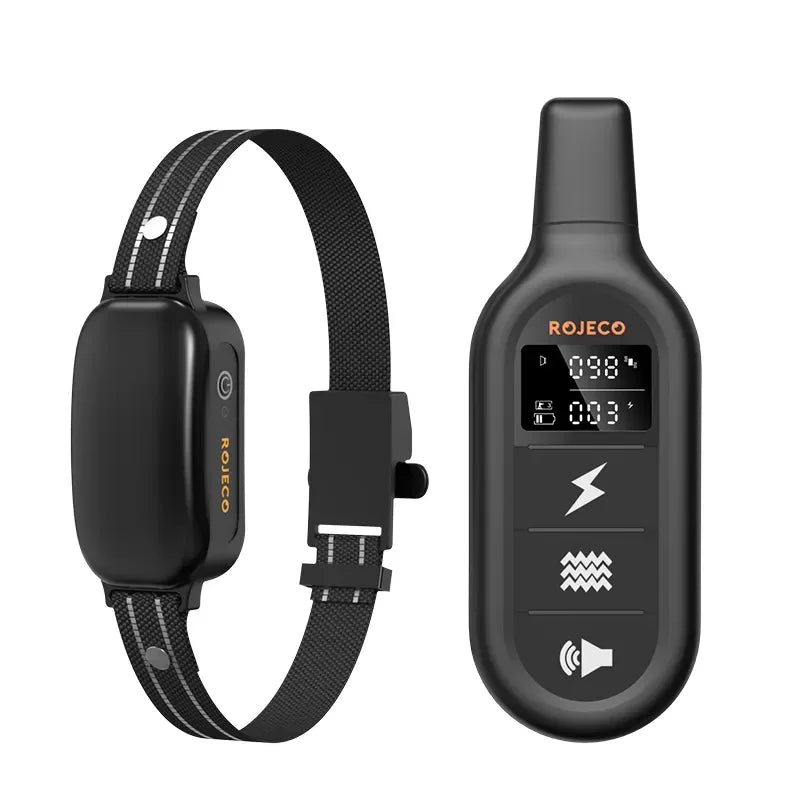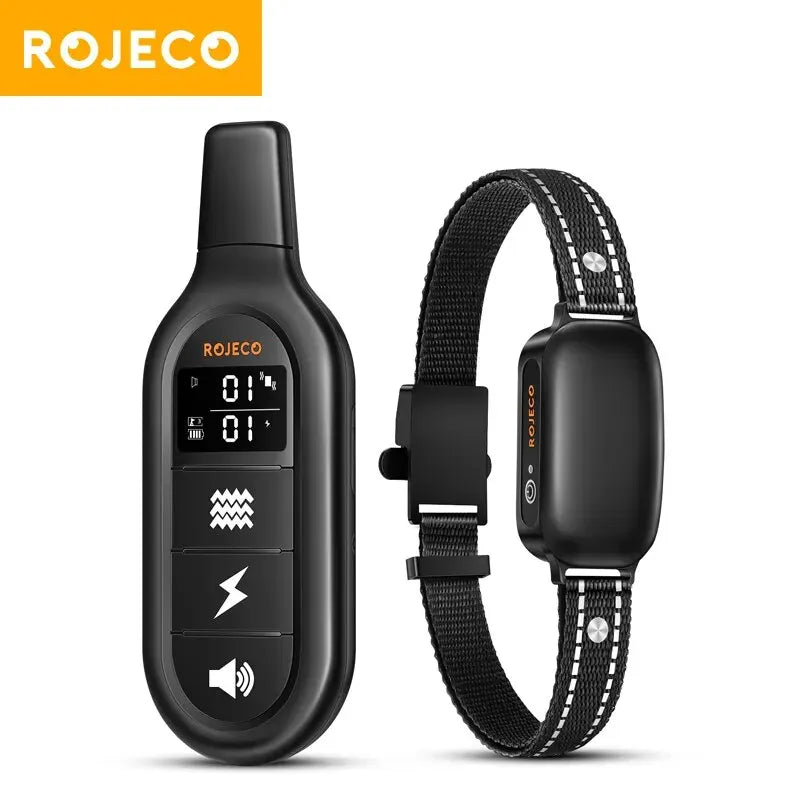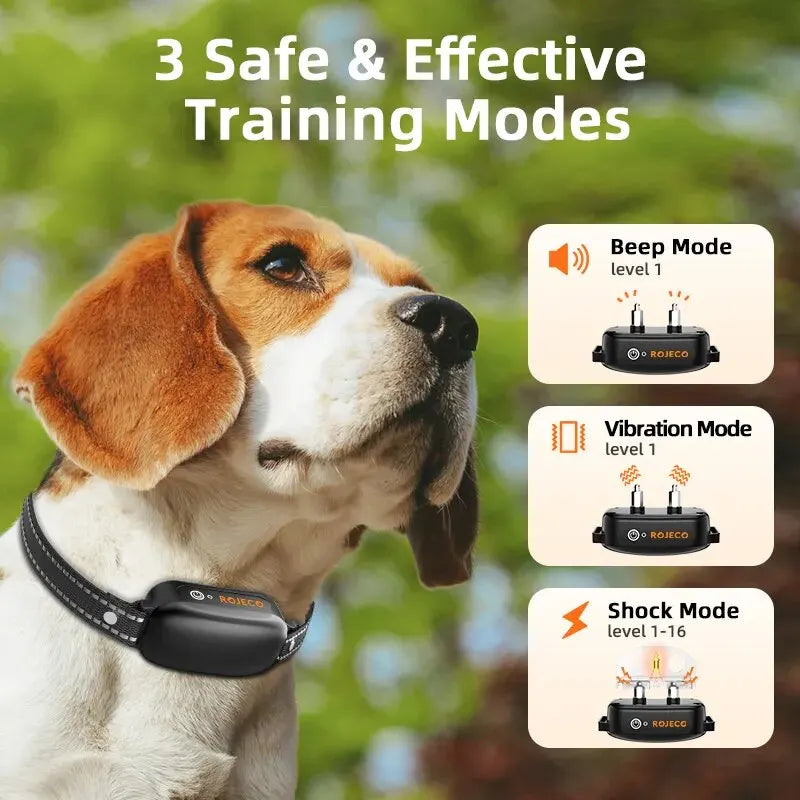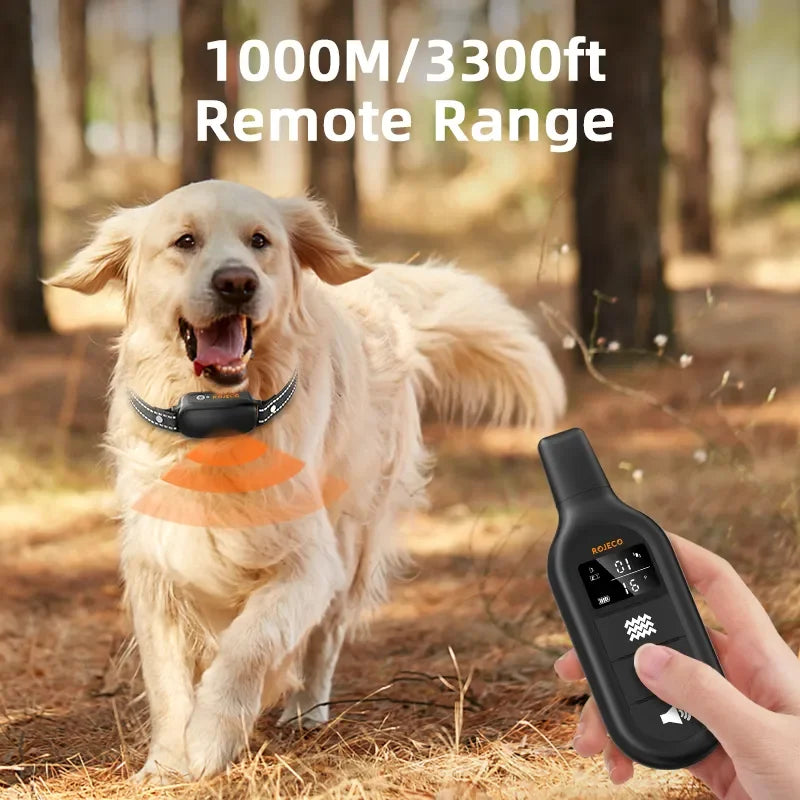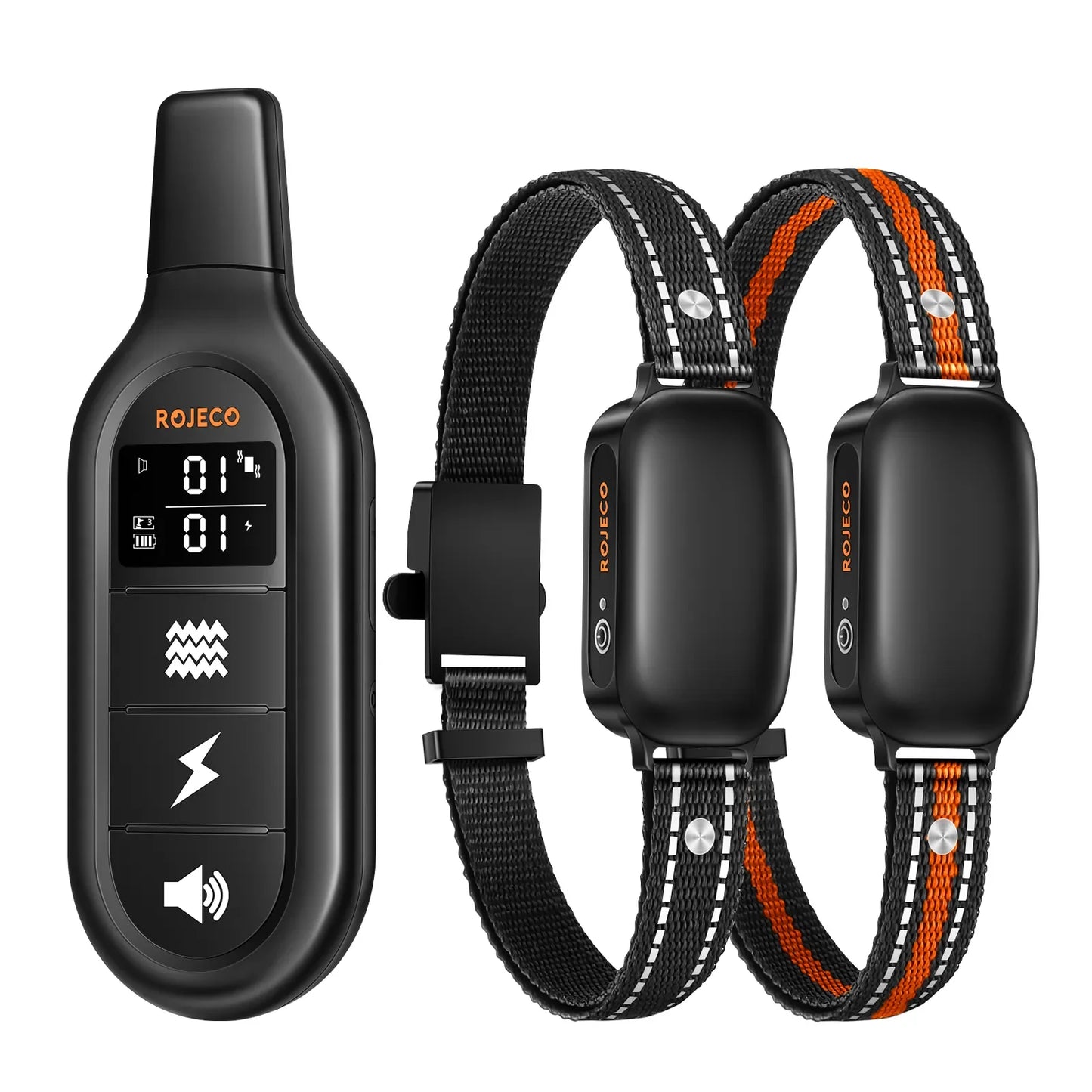PetsLoveTech
Training collar
Training collar
Couldn't load pickup availability
The Comprehensive Guide to Buying a Training Collar for Your Dog or Cat: Why It’s a Smart Investment for Pet Owners
As pet owners, we all want what’s best for our furry companions. Whether you have a playful pup or a mischievous cat, training is a critical part of ensuring that your pet is well-behaved, safe, and happy. Among the many tools available to help with training, one option that has proven to be highly effective is the training collar. For both dogs and cats, a training collar can be a game-changer, transforming difficult behaviors into positive habits and providing peace of mind for pet owners.
In this comprehensive guide, we’ll explore the various types of training collars, how they work, their benefits, and why purchasing one for your dog or cat is a wise decision. By the end, you’ll understand why investing in a training collar is not only beneficial for your pet but can also enhance your bond with them.
Why Training Is Essential for Dogs and Cats
Before diving into the specifics of training collars, it’s important to understand why training itself is so essential for pets. Both dogs and cats, though they have different temperaments and behaviors, require proper training to live harmoniously with humans.
Dogs
Dogs are naturally social animals, and their instinct is to form a pack hierarchy. Without proper training, dogs may develop behavioral issues such as aggression, excessive barking, pulling on the leash, or jumping on people. In some cases, untrained dogs can become a danger to themselves (e.g., running into traffic) or to others (e.g., biting or becoming overly aggressive).
Cats
While cats are often seen as more independent than dogs, they too benefit greatly from training. Cats can develop unwanted behaviors like scratching furniture, biting, or jumping onto counters. Training your cat to respect boundaries and respond to commands can make your home more peaceful and safe.
Whether you’re dealing with a dog or cat, training fosters better communication, reduces stress, and allows your pet to understand what is expected of them. This leads to a happier, more relaxed animal and a more harmonious household.
What Is a Training Collar?
A training collar is a specialized tool designed to help modify your pet’s behavior in a safe, controlled manner. While some people may have reservations about using a collar for training purposes, modern collars are designed with your pet’s well-being in mind. When used properly, a training collar can be a humane and effective way to teach your pet boundaries, commands, and positive behaviors.
There are several types of training collars available, each suited to different types of pets and training goals. Let’s take a closer look at the various options.
Types of Training Collars for Dogs and Cats
1. Basic Training Collar (Flat Collar)
- For Dogs and Cats: A flat collar is the simplest type of collar, typically used for walking or basic identification purposes. While it’s not specifically designed for training, it’s important to start with a collar your pet feels comfortable wearing. Basic flat collars are a good foundation for pets that are new to wearing collars and for attaching identification tags.
- Best For: Everyday use and initial exposure to collars.
2. Martingale Collar
- For Dogs: Martingale collars are often used with dogs who tend to pull on the leash. These collars tighten slightly when the dog pulls, providing gentle pressure to discourage pulling without choking the dog.
- Best For: Dogs who pull during walks or those with narrow heads (like Greyhounds) that can slip out of regular collars.
3. Shock Collars (E-Collars)
- For Dogs: These collars use small electrical pulses to get the dog’s attention when they engage in undesirable behaviors. Despite some misconceptions, modern shock collars allow you to control the intensity of the shock, and many models include vibration or tone settings that can be used before escalating to a shock.
- Best For: Stubborn dogs or those with serious behavioral issues like aggression or escaping.
4. Vibration Collars
- For Dogs and Cats: Vibration collars work by emitting a vibrating sensation, which helps interrupt undesirable behaviors. These collars are ideal for pets that are sensitive to noise or touch, offering a humane alternative to shock collars.
- Best For: Cats and small dogs that need gentle correction, as well as deaf pets that need non-verbal communication.
5. Spray Collars
- For Dogs: Spray collars release a harmless burst of citronella or air when the dog engages in unwanted behavior, such as barking. The unpleasant scent or sensation discourages the behavior without causing physical discomfort.
- Best For: Dogs that bark excessively or are responsive to scent-based deterrents.
6. Ultrasonic Collars
- For Dogs and Cats: Ultrasonic collars emit a high-pitched sound when the pet misbehaves. This sound is inaudible to humans but unpleasant for pets, making it an effective way to interrupt negative behaviors.
- Best For: Both dogs and cats, especially those that are sensitive to sound-based training.
Benefits of Using a Training Collar
Now that we’ve covered the different types of training collars, let’s discuss the key benefits of using one for your dog or cat.
1. Behavior Modification
Training collars are designed to address specific behavioral issues, making them one of the most effective tools for behavior modification. Whether your dog pulls on the leash, barks excessively, or your cat scratches the furniture, a training collar can help curb these behaviors quickly and effectively. The instant feedback provided by the collar helps your pet understand which actions are undesirable, allowing for faster learning.
2. Safety
One of the biggest concerns for pet owners is keeping their pets safe, whether that means preventing a dog from running into traffic or keeping a cat from wandering into dangerous areas. Training collars can help teach your pet boundaries, such as staying within the yard or walking without pulling. This not only makes walks more enjoyable but also ensures your pet remains safe in potentially hazardous situations.
For example, vibration collars or shock collars can be invaluable in training a dog to come back when called, even in distracting environments like parks or busy streets. Similarly, an ultrasonic collar can help prevent a cat from jumping onto dangerous surfaces like stoves.
3. Improved Communication
Pets don’t speak human languages, but training collars allow you to communicate more effectively with your dog or cat. Collars that emit sounds, vibrations, or light signals can help reinforce commands and strengthen the bond between you and your pet. When used properly, training collars become an extension of your voice, providing a clear signal to your pet even at a distance.
This is especially important for dogs and cats that may be harder to train through verbal commands alone. Deaf pets, for instance, can benefit immensely from vibration collars, as these collars provide a tactile way to communicate even when the pet can’t hear you.
4. Positive Reinforcement
Many training collars allow you to pair correction with positive reinforcement. For example, after using a vibration collar to interrupt an unwanted behavior, you can immediately reward your pet with a treat or praise when they exhibit the desired behavior. This teaches them to associate the correction with positive outcomes, encouraging better long-term behavior.
5. Customizable Training
Modern training collars come with adjustable settings, allowing you to tailor the intensity of the correction to your pet’s needs. This makes them highly customizable, ensuring that your pet receives the appropriate level of feedback without being overwhelmed. For example, a stubborn dog may require a higher intensity setting on an e-collar, while a more sensitive dog or cat may only need a low-level vibration to respond.
6. Convenience
Training collars provide an easy and convenient way to reinforce commands, especially in situations where traditional training methods might be challenging. For example, if you’re in a public park or an open field, a training collar allows you to maintain control over your dog’s behavior without needing to physically intervene. This makes training more practical, especially for busy pet owners who may not have the time or resources for constant hands-on training.
7. Long-Term Behavior Changes
When used consistently and correctly, training collars can lead to long-lasting behavior changes. Pets quickly learn which actions result in correction, and once they internalize these lessons, the collar may no longer be needed as frequently. This makes training collars a great long-term investment in your pet’s well-being.
Addressing Common Concerns About Training Collars
While training collars are highly effective, some pet owners have concerns about their use. Let’s address a few of the most common questions.
1. Are Training Collars Cruel?
No, training collars are not cruel when used properly. Modern collars are designed with your pet’s safety and comfort in mind. Many collars, like vibration or ultrasonic models, provide gentle, non-invasive corrections that help guide your pet’s behavior without causing pain. Even e-collars (shock collars) have adjustable settings to ensure that the correction is mild and appropriate for your pet’s size and temperament.
The key to humane use is proper training. Pet owners should always follow the manufacturer’s instructions and consult with a professional trainer if needed to ensure the collar is used effectively and safely.
2. Will My Pet Become Dependent on the Collar?
No, pets do not become dependent on training collars. In fact, the goal of using a collar is to help your pet learn positive behaviors and eventually phase out the need for the collar. With consistent training, your dog or cat will learn to respond to verbal commands and positive reinforcement, making the collar unnecessary for everyday use.
3. Are Training Collars Effective for Cats?
Yes, training collars can be effective for cats, though they are often used differently than for
Share
